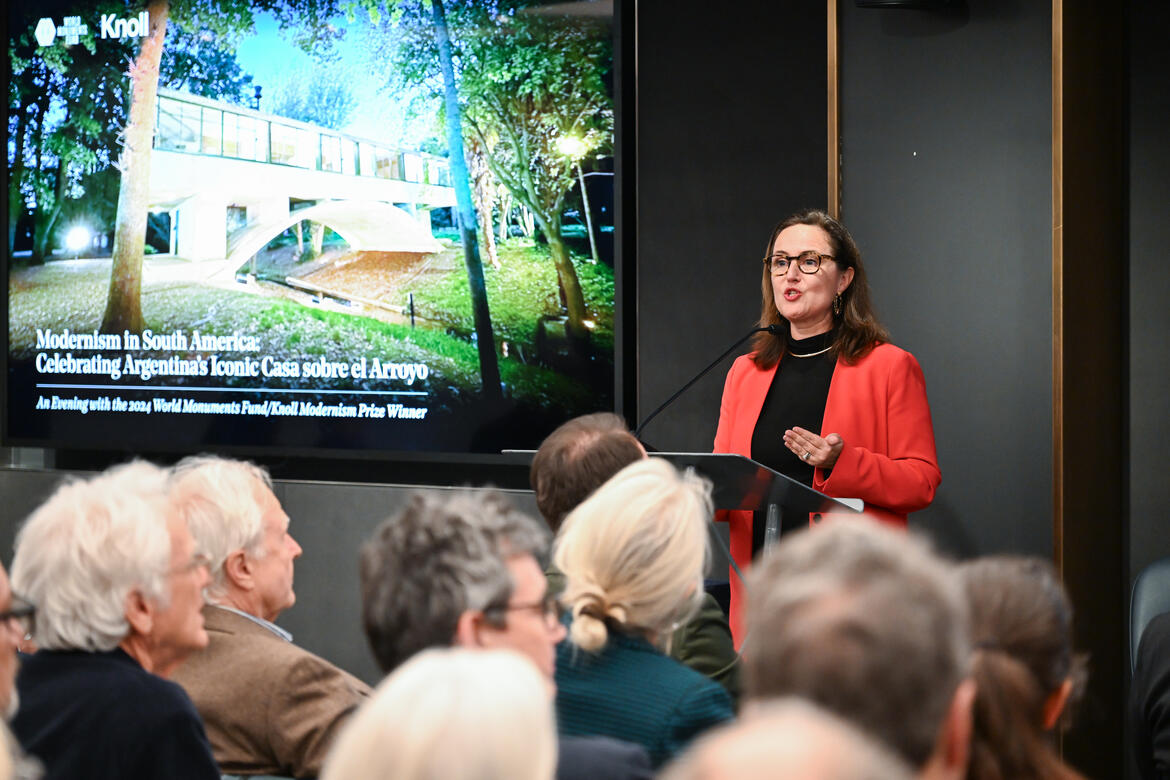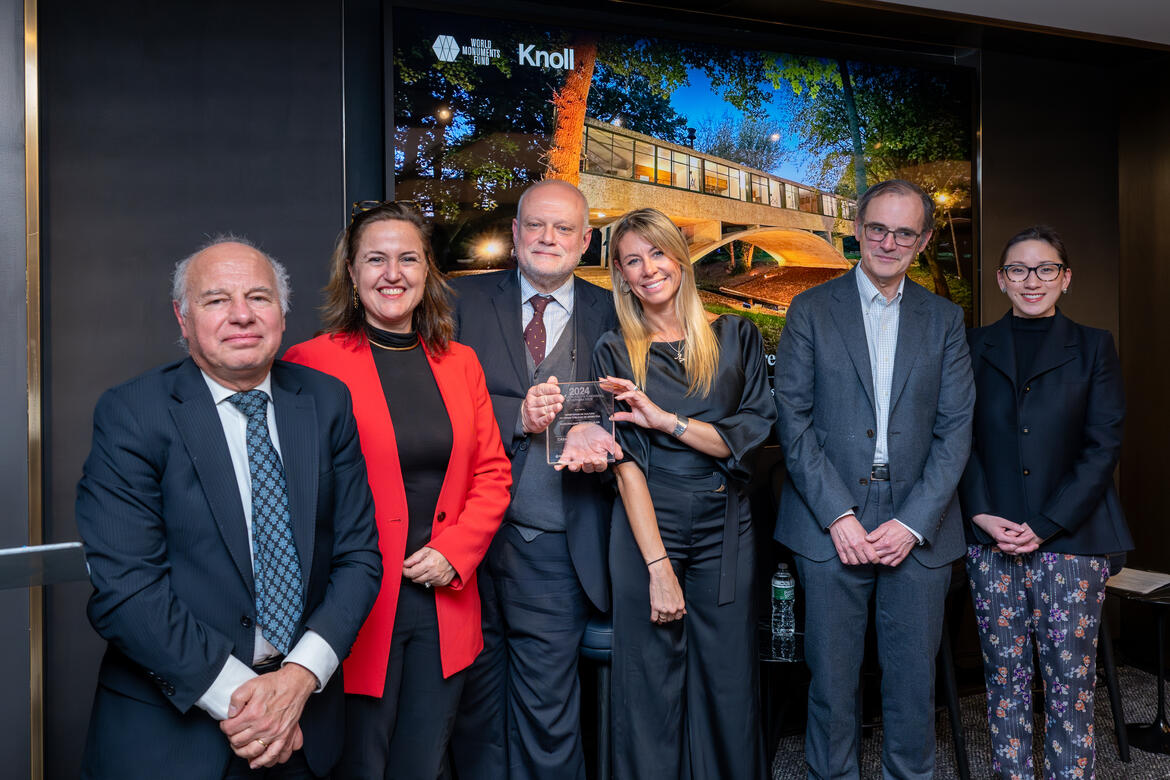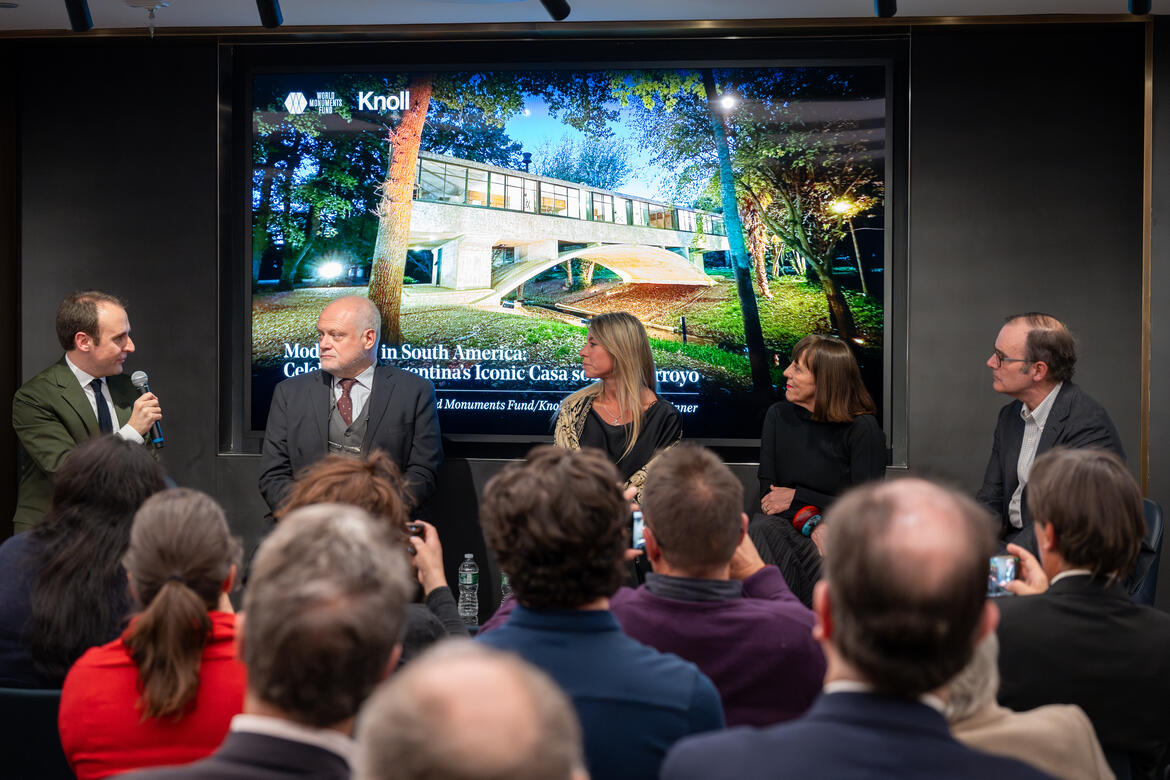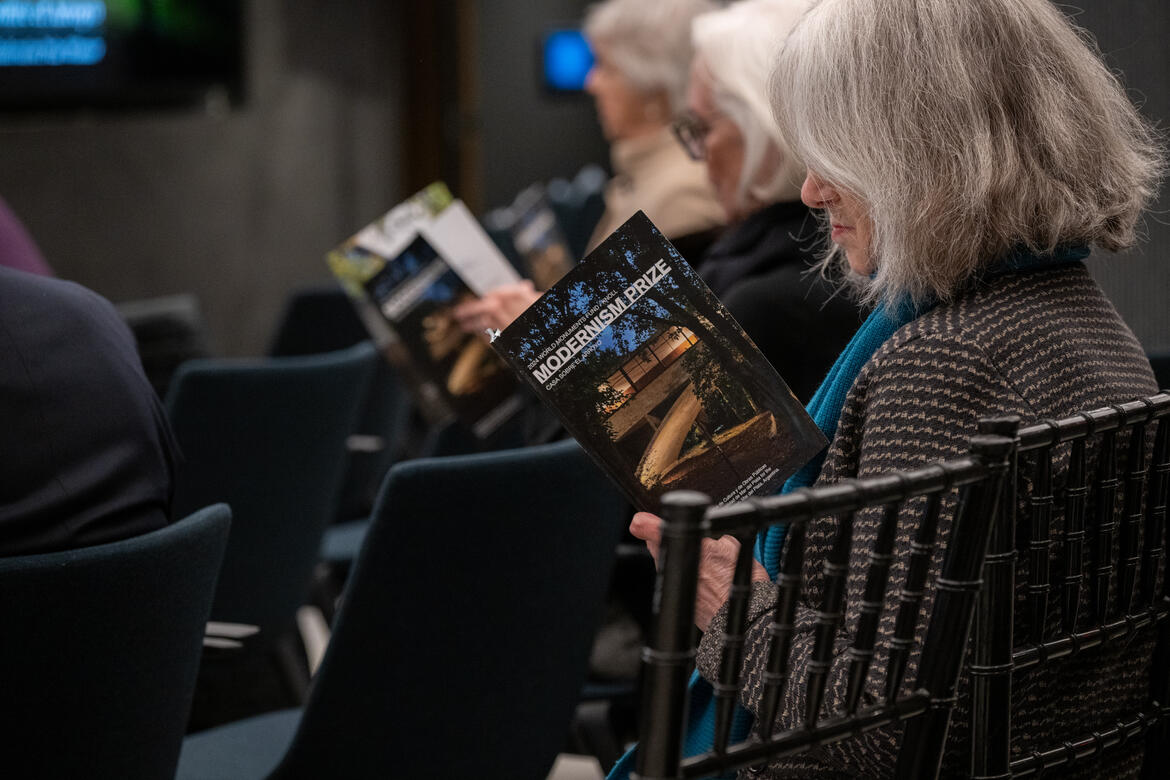A Celebration of Latin American Modernism: Honoring the Latest Winners of the World Monuments Fund/Knoll Modernism Prize
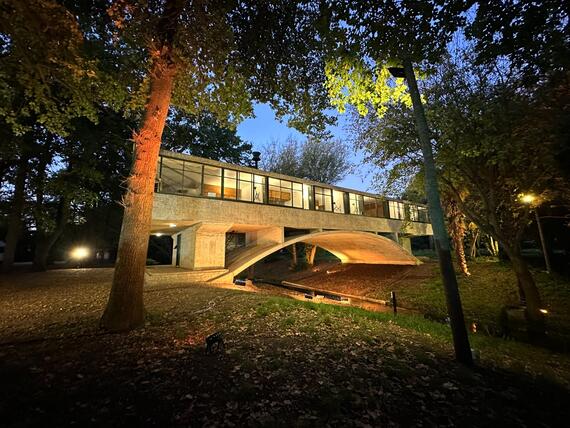
Following the announcement that the project to revive Argentina’s Casa sobre el Arroyo had won the 2024 World Monuments Fund/Knoll Modernism Prize, we were delighted to host a celebration of Latin America’s contributions to avant-garde architecture and its conservation. The event included a lively discussion by experts moderated by Javier Ors Ausín, World Monuments Fund (WMF) program manager and the overseer of WMF’s modern heritage-related work. This cycle of the Modernism Prize—which received a record-breaking number of applications—marked the first time a Latin American building and a Latin American conservation team had received the award since it was begun in 2008 with founding sponsorship from Knoll.
In her opening remarks, WMF President and CEO Bénédicte de Montlaur noted that since this year’s winner was announced she had received numerous messages of support from Argentina, where the building is a source of national pride. “Modernism in the Global South takes many different shapes and has really been integrated by local communities as part of their identity,” she said.
Barry Bergdoll, chairman of the prize jury and Meyer Schapiro Professor of Art History and Archaeology at Columbia University, echoed de Montlaur’s statements and underlined the importance of a truly global perspective on modernist architecture. For too long, he argued, architects outside of Europe and the United States have been cast as passive copyists of imported styles; the Casa sobre el Arroyo, with its sui generis design, flipped the script on that. “At Mar del Plata, you get a house that is without source—even if it’s over a source of water," he said.
Susan Macdonald—another member of the jury and head of buildings and sites at The Getty Conservation Institute —emphasized the leadership South America has taken in the conservation of modern architecture, which in many countries is excluded from heritage protections due to age requirements. “There’s a recognition that these places can be worthy of our attention and our conservation pretty early on,” she said, “and there’s an incredible network of professionals who are working in these countries to identify, protect and conserve.” Greater recognition of Latin America’s record of conservation would allow for more global exchange of expertise related to shared challenges—from opposing development pressure to tackling the fragility of certain materials.
“This house is a part of me,” said Magali Marazzo, general director of the Casa sobre el Arroyo - Casa del Puente Museum, who had been working towards the restoration of the house for 20 years. She also underscored the often-neglected contributions of Delfina Gálvez Bunge de Williams—who along with her then-husband, Amancio Williams, was part of the team behind the house—to the final design, particularly her role in selecting the building’s precise location in the park.
Fabio Grementieri, a partner at the architecture firm G+K and a former member of the National Commission of Monuments of Argentina, observed the Casa sobre el Arroyo’s particular significance given its status as one of the only complete buildings by Williams, whose ambitious designs remained largely unrealized. Grementieri also discussed how the team behind the award-winning conservation project—the Ministries of Culture and Public Works of Argentina and the Municipality of Mar del Plata—had put public outreach at the heart of their work, from publishing documentaries in YouTube to inviting university students to view the ongoing restoration.
Grementieri and Marazzo were presented with the award following the conclusion of the panel. The evening also included a tribute to Jean-Louis Cohen, an advocate of the World Monuments Fund/Knoll Modernism Prize since its inception in 2008 and a longtime member of the jury. For many in attendance, Cohen was not just an admired colleague but a dear friend, and the tribute was a testament to the depth of the impact he had on those around him.

